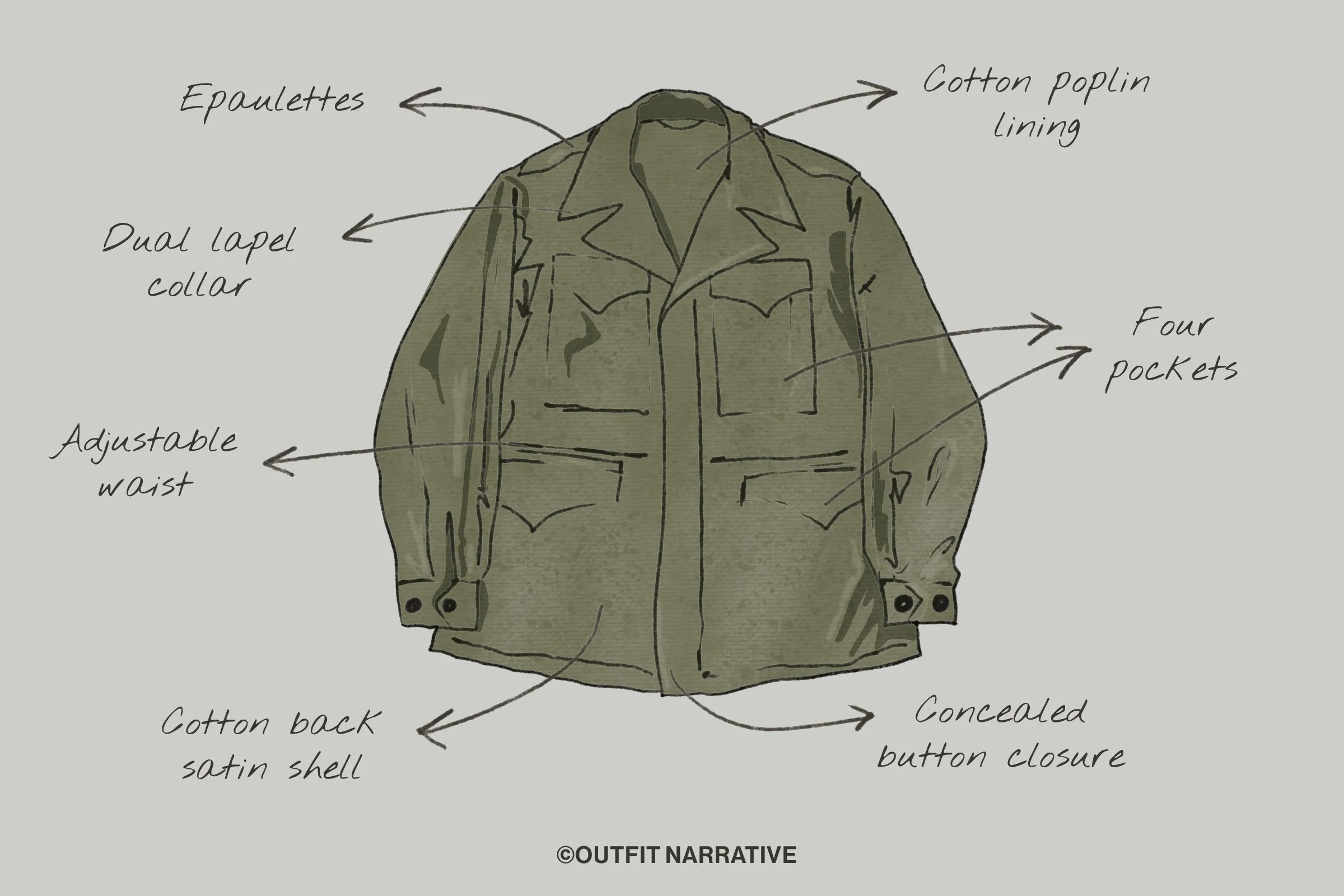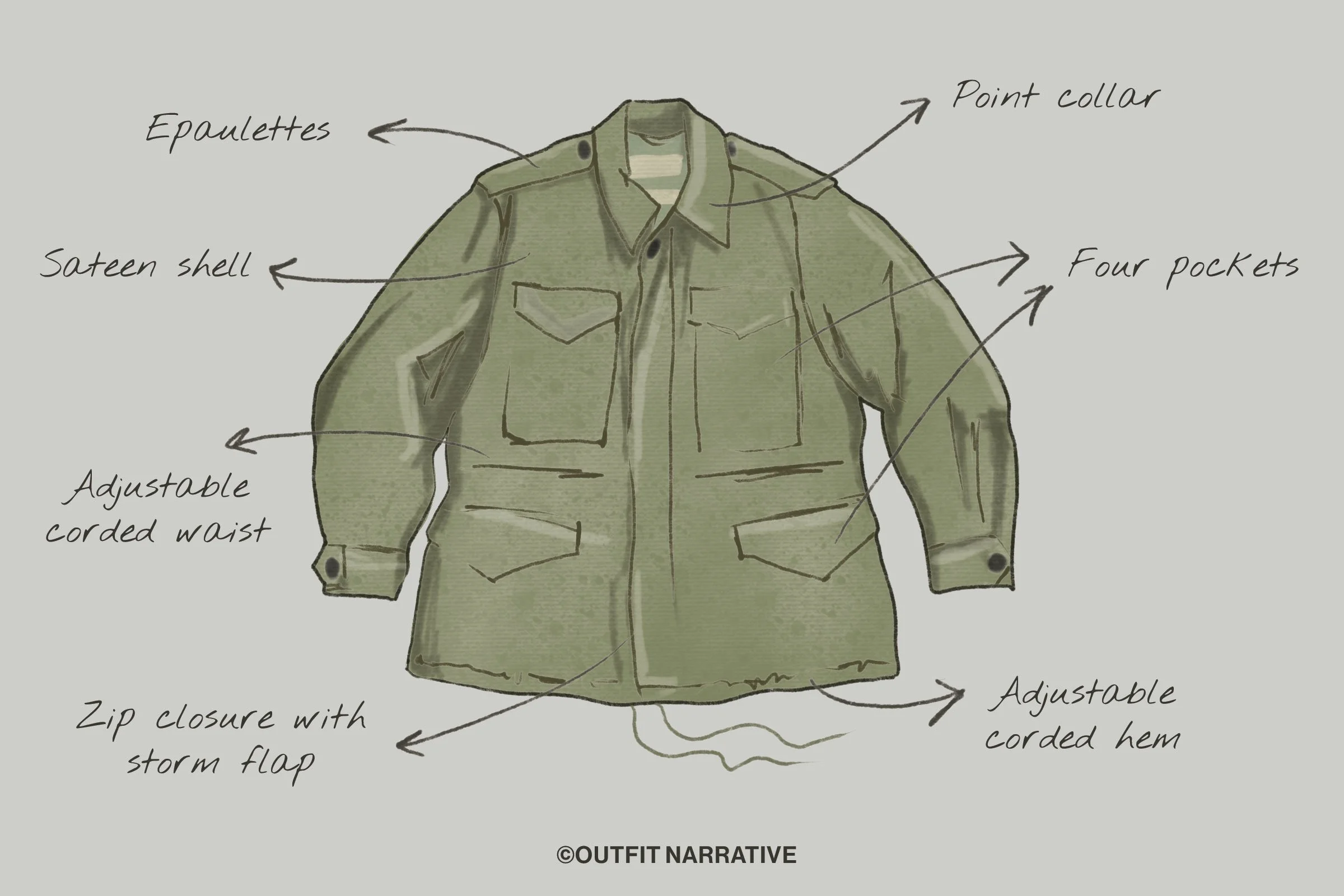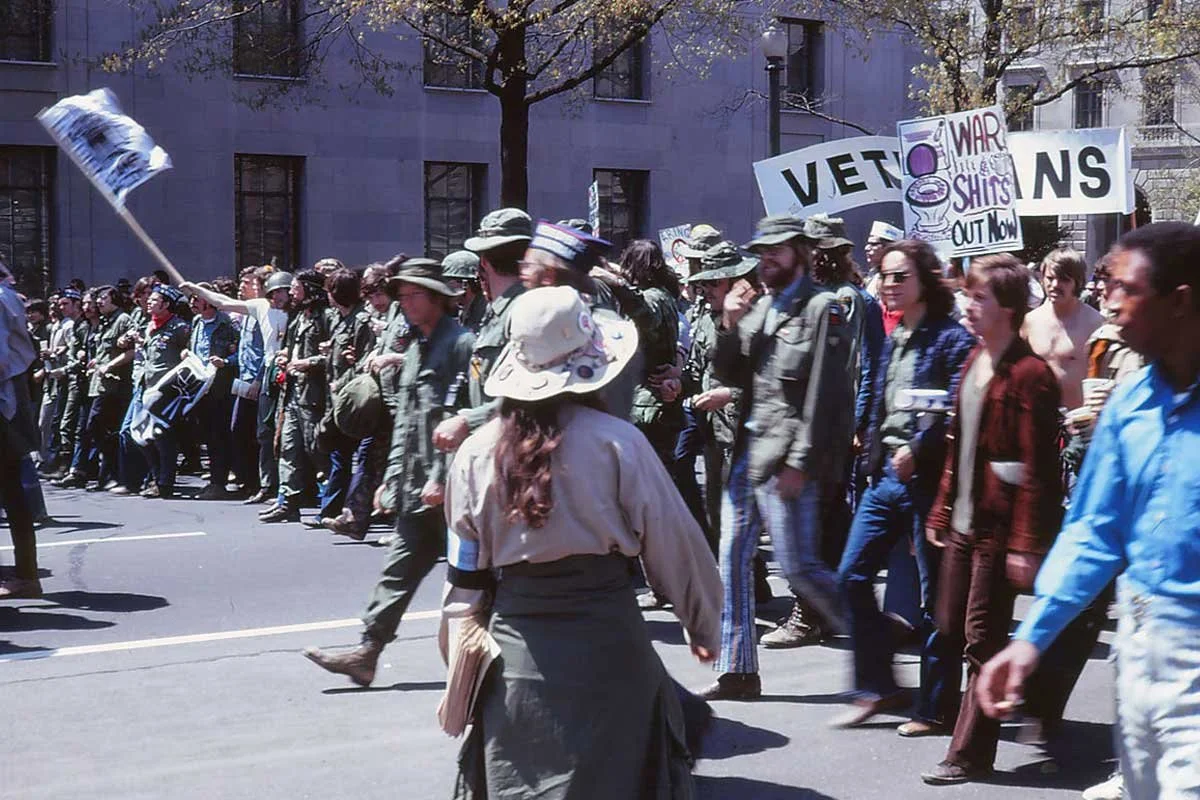The History of The U.S. Army Field Jacket
Soldiers wearing the M-1943. Image via atthefront.com
When the World War II started, militaries around the world moved away from the bright, decorative uniforms of the previous century in favor of more practical camouflage. But even during that time the U.S. Army’s brown and khaki uniforms were considered particularly unattractive — earning soldiers the nickname “Brown Jobs” for their resemblance to, as some joked, vomit and when dirty, resembled mud or worse. Yet from these humble beginnings came one of the most enduring pieces of military outerwear.
Sylvester Stallone in (Rambo) “First Blood” (1982)
When the World War II started, military uniforms went from the bright, decorative uniforms of the previous century to more practical camouflage. But the U.S. Army’s brown and khaki uniforms were considered particularly unattractive and this gave soldiers the nickname “Brown Jobs” because their color reminded people of vomit and when they were dirty, they looked like poop. Yet from these humble beginnings came one of the most enduring pieces of military outerwear.
M-41 (also known as M-1941) (1940-1945)
M-41
The first field coat The M-41 was named, like all its successors, by the year it was introduced. By the start of WWII the field jacket was mostly used for base duty, not combat and the U.S. Army's uniform had become less practical than what soldiers wore in WWI. To fix this the Army introduced the M-1939 Service Coat, a long wool coat for general use. But the coat wasn’t very practical, and with concerns about wool shortages, the Army developed the hip-length, loose-fitting M-41 jacket, also known as the O.D. Cotton Field Jacket, named after its fabric and olive drab No. 2 color. As the first military field coat, the M-41 was based on a civilian windbreaker, designed to protect against wind and light rain. It also featured extra elements like a cotton poplin outer shell, wool flannel lining, button closures at the neck and cuffs, and a storm flap over the front zipper. While it was part of the WWII combat uniform in the early years, some soldiers continued to wear it throughout the war due to shortages.
M-43 (also known as M-1943) (1943-1950)
M-43
In August 1943, the M-41 was replaced by the M-1943, which became the standard combat uniform for the rest of World War II. Designed to be worn as an outer layer in any climate, it needed to fit over other clothing. It was made from sateen cotton for wind and water resistance and extended to hip-length. The jacket was lined with poplin and featured four front pockets with buttons, a detachable hood and a drawstring waist for a better fit. It was produced in the much darker olive drab No. 7 shade so people would stop calling soldiers 'Brown Jobs.' The jacket was made to be worn with a pile field jacket liner in cold weather and was produced in two versions. Even though it was a well-designed piece of military clothing, the M-43 took much longer to distribute than expected and many soldiers never received the key component - the pile liner.
M-50 (also known as M-1950) (1950-1951)
Most people don’t know this model, but the M-43 was later replaced by the M-50, which was essentially the same garment but with interior buttons that made it easier to attach the liners.
M-51 (also known as M-1951) (1951-1965)
M-51
M-65 (also known as M-1965) (1965-2005)
M-65
Alpha Industries, a Tennessee-based company was the one that updated the design of the field jacket and produced the M-65, the final version of the U.S. Army field jacket. Their contract with the Department of Defense began in 1959, and they’re also responsible for creating another iconic jacket: the MA-1 bomber. Main differences of the M-65 compared to earlier versions are a built-in hood that can be folded into the collar (a stand collar, not pointed), Velcro on the sleeve cuffs and collar, and more advanced fabrics: cotton-nylon or cotton-polyester sateen, which significantly improved wind and water resistance.
Like the M-43 and M-51, the M-65 had four front pockets and was designed as a waterproof layering piece. It featured internal buttons for attaching a liner and buttonholes on the collar for an optional extreme-weather hood. The first version of the M-65 did not have epaulettes and had a shorter, slimmer fit which was later changed to a longer and boxier cut to make it more suitable for layering.
Robert De Niro in "Taxi Driver" (1976)
The M-65 was considered the most functional and practical field jacket, which led to its use by the U.S. military for four decades from 1965 to 2005, with almost no design changes. Over the years, the only changes were the addition of various camouflage versions (woodland camo, desert camo, etc.).
In Vietnam, the M-65 was one of the most commonly worn jackets by American soldiers. When veterans brought them back home, the jackets quickly found a place in civilian life and became a symbol of the anti-war movement and misfits. Over time the M-65 became a style icon, worn by everyone from Sylvester Stallone in Rambo and Robert De Niro in Taxi Driver to Vietnam War veteran John Kerry, who used it as an anti-war symbol during public appearances, which helped him build the image that eventually led to his candidacy for U.S. President.
The M-65 started as a military jacket but became a true style icon that is still relevant today. Its popularity spread worldwide when it was sold as surplus in countries with U.S. military bases, and it continues to stand as a menswear icon to this day due to its classic look, practical design and versatility.
If you are like me and military jackets are a staple in your wardrobe, or if you're looking for your first one read more about versatility of a military jacket, or browse a list of best quality military jackets available today. With all the subtle differences between these jackets, everyone has their own favorite based on personal preferences. Let me know which one is yours.
related articles












The U.S. Army field jacket went from functional outerwear to cultural icon, revealing how each model from the M-41 to the M-65 shaped not only military history but the evolution of modern menswear.